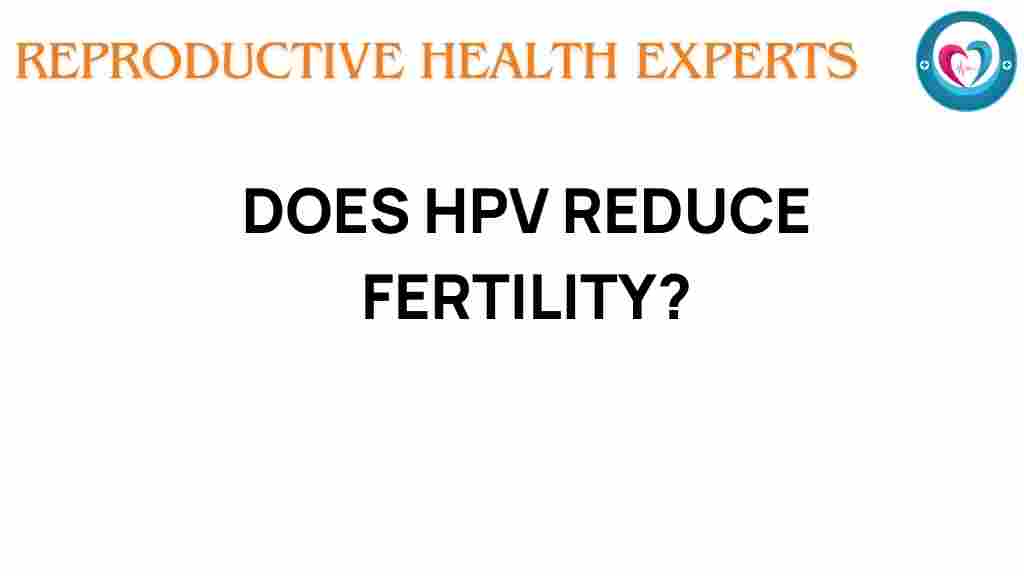Unraveling the Mystery: Does HPV Reduce Fertility?
Human Papillomavirus (HPV) is one of the most common sexually transmitted infections (STIs) affecting individuals worldwide. While most people with HPV do not experience any symptoms and the virus typically clears on its own, there is an ongoing debate about the potential link between HPV and fertility issues, particularly in women’s health. This article aims to explore whether HPV reduces fertility, the implications for reproductive health, and the health risks associated with this infection.
Understanding HPV and Its Types
HPV is a group of more than 200 related viruses, of which over 40 types can be transmitted through direct sexual contact. HPV can be categorized into two main groups:
- Low-risk HPV: These types can cause genital warts but are not associated with cancer.
- High-risk HPV: These types can lead to cervical cancer and other cancers, such as anal and oropharyngeal cancers.
For women’s health, the most concerning types are HPV 16 and HPV 18, known for their association with cervical cancer. Understanding the types of HPV is crucial when discussing its potential impact on fertility.
HPV and Its Impact on Reproductive Health
HPV primarily affects the genital area, but it can also affect the cervix, which is crucial for reproductive health. There is growing concern about how high-risk HPV types might influence fertility. Here’s a closer look at the potential connections:
- Cervical Changes: High-risk HPV can lead to precancerous changes in the cervix, known as cervical dysplasia. These changes can affect the cervical mucus and the ability of sperm to travel through the cervix to fertilize an egg.
- Pelvic Inflammatory Disease (PID): HPV may be associated with PID, a condition that can result from untreated STIs. PID can cause scarring and blockages in the reproductive organs, leading to infertility.
- Immune Response: The body’s immune response to HPV could potentially interfere with the reproductive system, although more research is needed to understand this link fully.
The Link Between Infertility and HPV
Infertility affects approximately 10-15% of couples globally, and while many factors contribute to infertility, understanding the role of HPV is essential. Some studies suggest that high-risk HPV may impact fertility, but the evidence is not definitive. Here are some important points to consider:
- Research Findings: Some research indicates that women with HPV may experience a higher rate of infertility compared to those without the virus. However, the connection is complex and influenced by other factors, such as the presence of other STIs, overall reproductive health, and lifestyle choices.
- Other Health Risks: Infertility can arise from several health issues, such as endometriosis, blocked fallopian tubes, or hormonal imbalances. The presence of HPV does not directly cause these conditions but may exacerbate existing issues.
- HPV and Pregnancy: For most women, having HPV does not impede their ability to become pregnant. However, women with cervical cancer or severe dysplasia may face complications that could affect fertility.
Health Risks Associated with HPV
While discussing HPV and fertility, it is crucial to understand the broader health risks associated with HPV infections. Here are some of the most significant health risks:
- Cervical Cancer: The most severe risk associated with high-risk HPV types is cervical cancer. Regular screenings, such as Pap smears, can help detect changes early and prevent cancer development.
- Other Cancers: HPV is linked to several other cancers, including vulvar, vaginal, anal, and oropharyngeal cancers.
- Psychological Impact: The diagnosis of HPV can lead to anxiety and stress regarding sexual health and future fertility, impacting overall well-being.
Prevention of HPV and Its Associated Risks
Preventing HPV is vital for maintaining reproductive health and reducing the risk of infertility. Here are effective strategies for prevention:
- HPV Vaccination: The HPV vaccine is highly effective in preventing infections from the most common high-risk and low-risk HPV types. Vaccination is recommended for preteens and young adults, ideally before they become sexually active.
- Safe Sex Practices: Using condoms can reduce the risk of HPV transmission, although they do not provide complete protection. Limiting the number of sexual partners can also decrease the likelihood of HPV infection.
- Regular Screenings: Routine Pap smears and HPV tests can help detect precancerous changes early, allowing for timely intervention.
Troubleshooting Tips for Women Concerned About HPV and Fertility
If you are a woman concerned about the impact of HPV on your fertility, consider the following troubleshooting tips:
- Consult a Healthcare Provider: Speak with a healthcare professional about your concerns regarding HPV and fertility. They can provide guidance, recommend screenings, and discuss any necessary treatments.
- Maintain a Healthy Lifestyle: A balanced diet, regular exercise, and avoiding smoking can enhance your overall reproductive health.
- Stay Informed: Keep up-to-date with the latest research on HPV and fertility. Reliable sources include medical journals and healthcare websites.
- Consider Counseling: If the stress of an HPV diagnosis impacts your mental health, speaking with a counselor or therapist may help.
Conclusion: Understanding HPV’s Role in Fertility
In summary, while HPV is a common sexually transmitted infection, the relationship between HPV and fertility is complex. High-risk HPV types are primarily associated with cervical cancer and other health risks that may indirectly affect fertility. However, many women with HPV can still conceive and carry healthy pregnancies. Understanding the importance of prevention, regular screenings, and maintaining overall reproductive health is essential for all women. If you have concerns about HPV and its impact on your fertility, it’s crucial to consult a healthcare professional for personalized advice and support.
For further reading on HPV and its implications for women’s health, check out the CDC’s HPV Information Page. Additionally, if you’re looking for resources on fertility and reproductive health, consider visiting this comprehensive guide.
This article is in the category Fertility and created by ReproductiveHealthExperts Team
